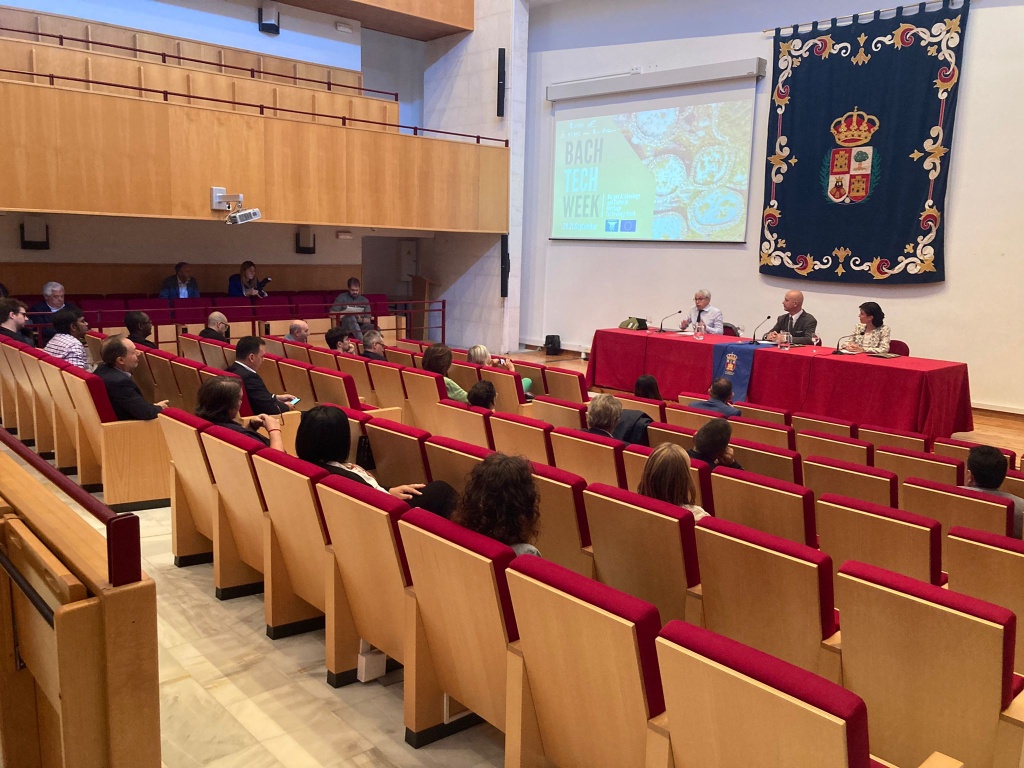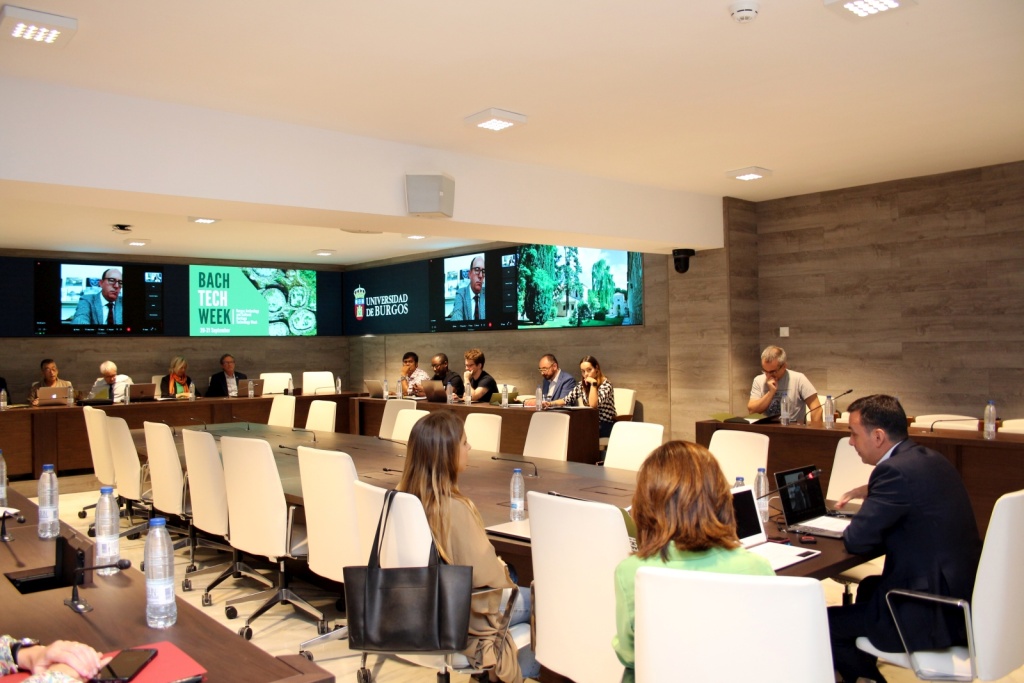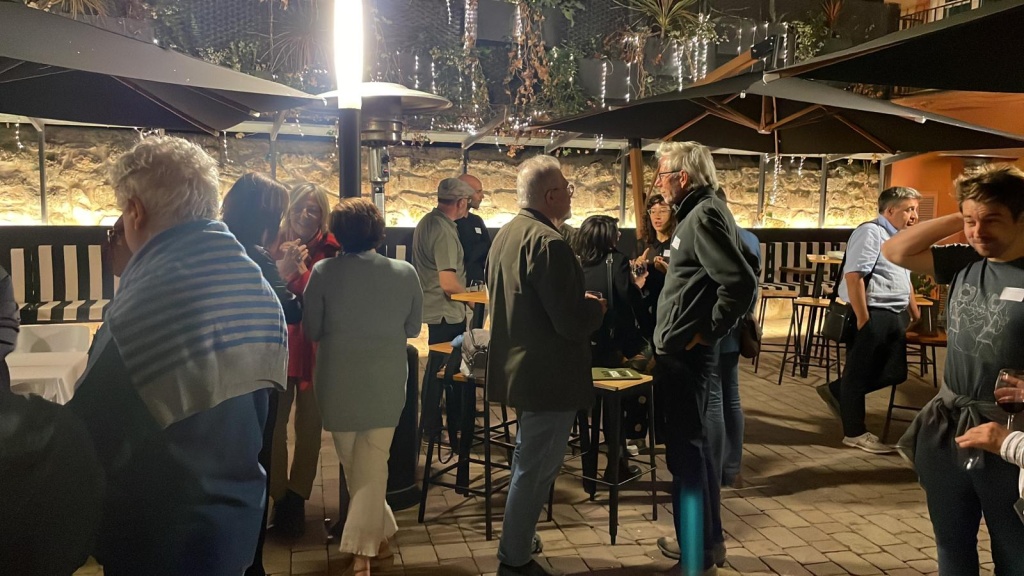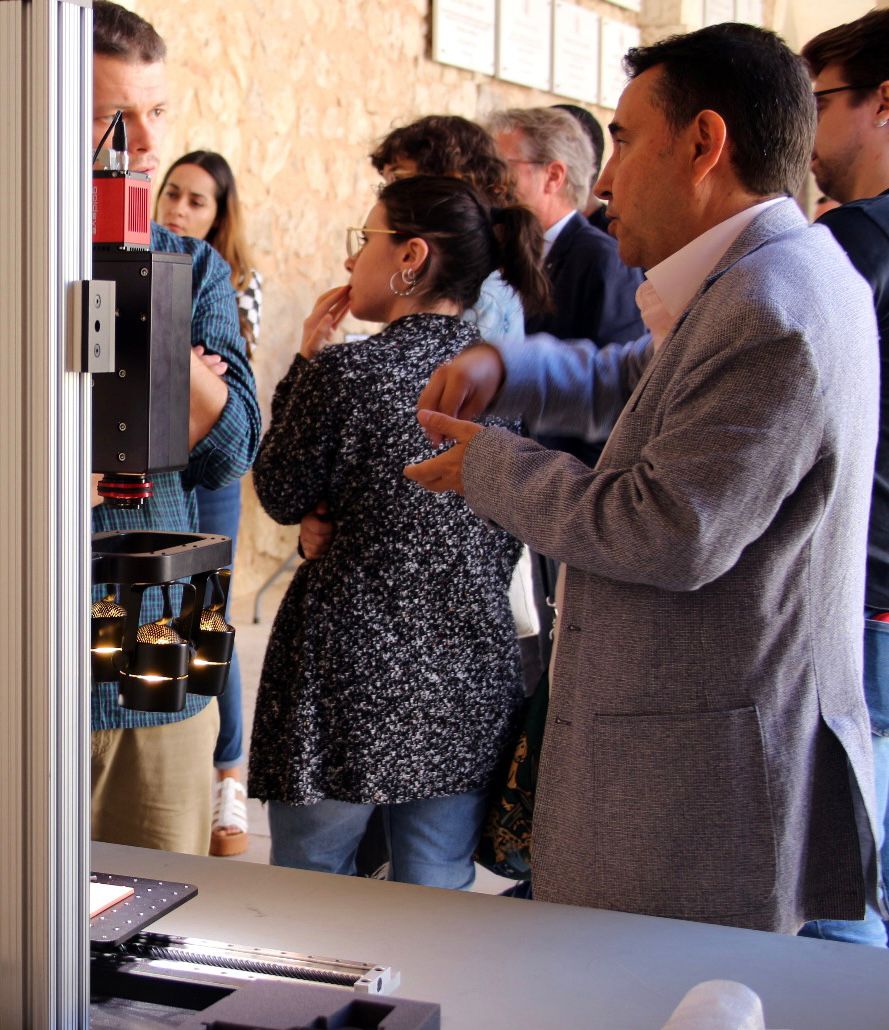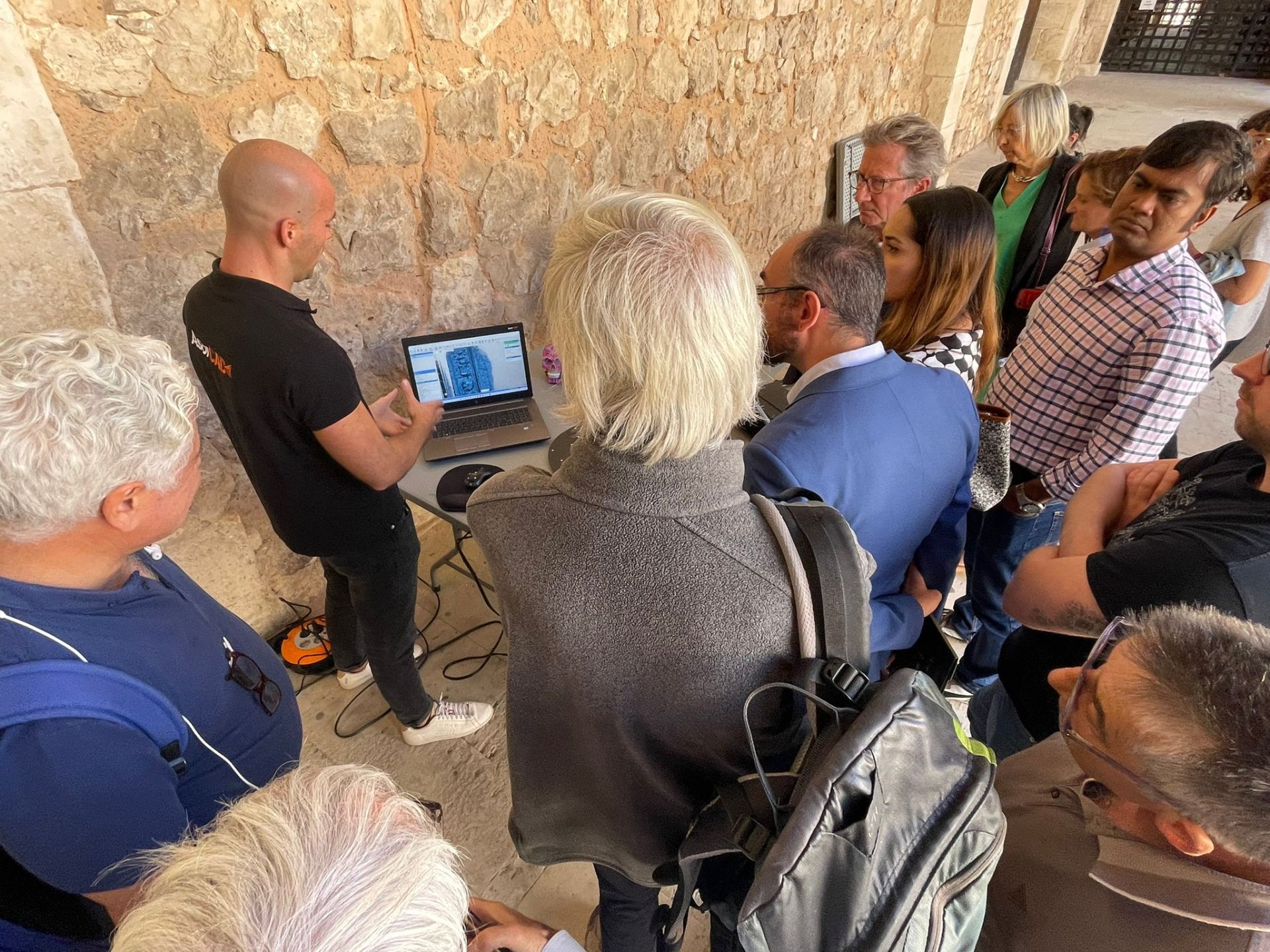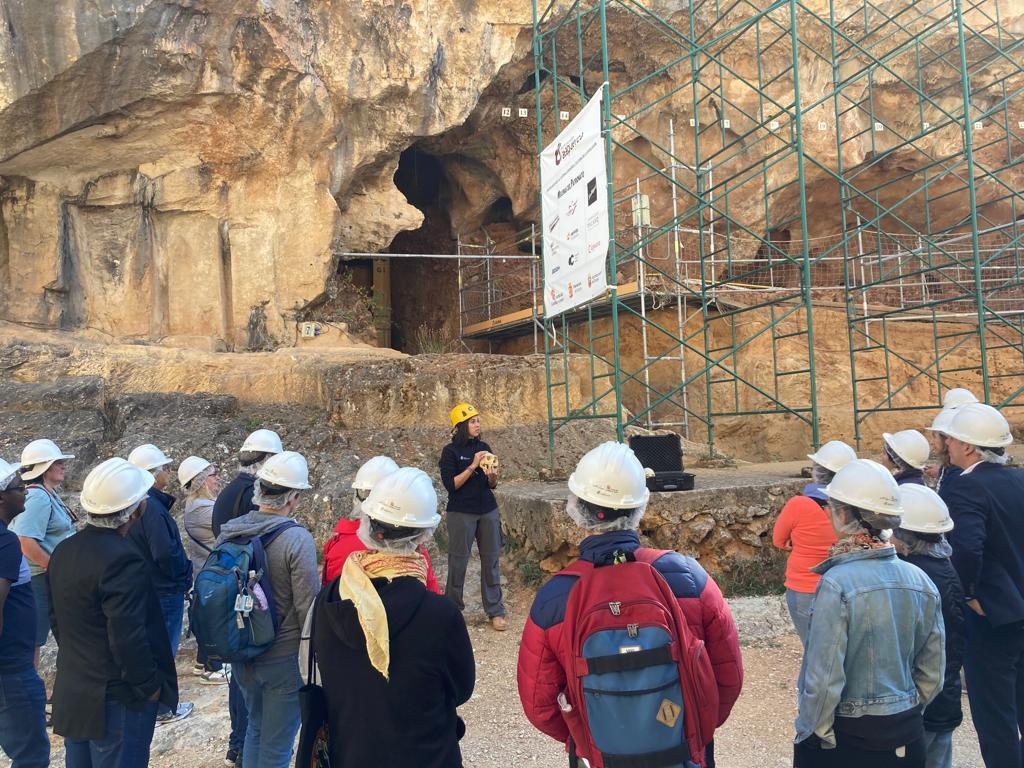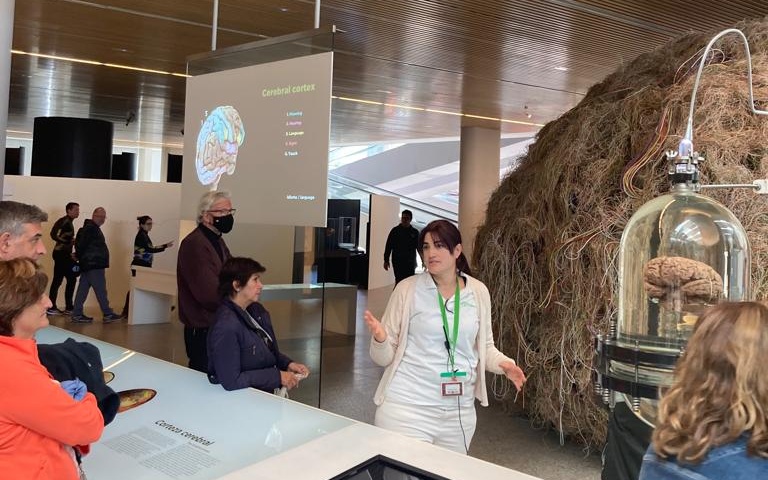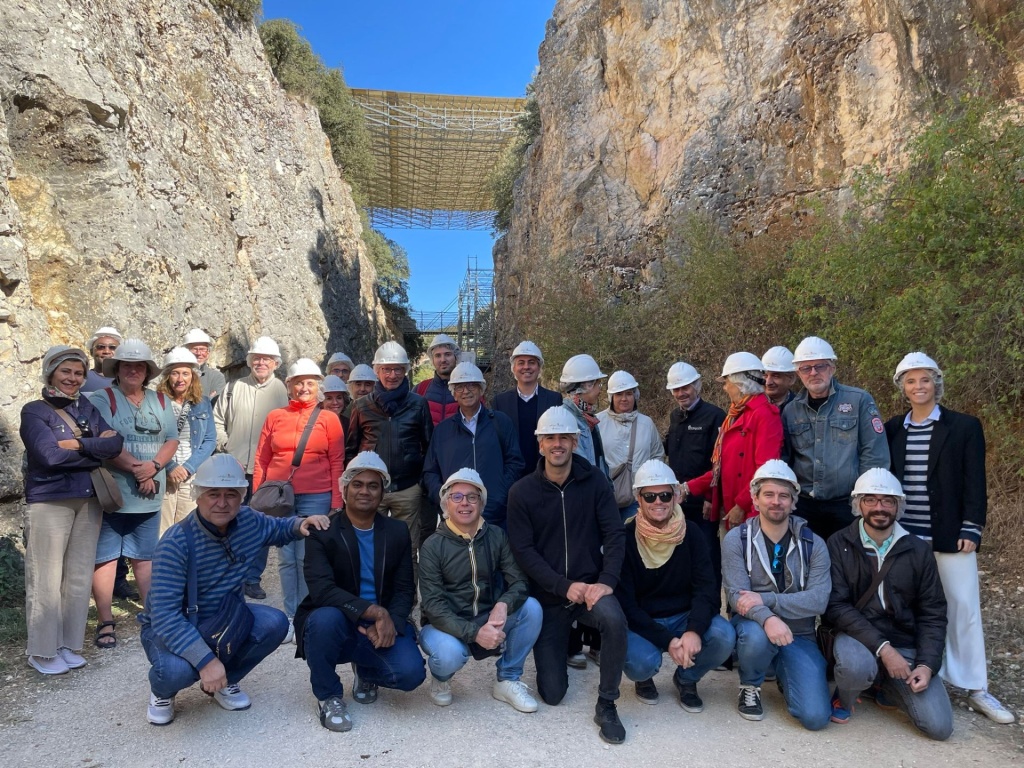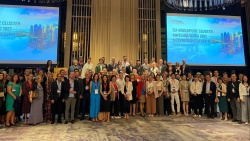On 20th and 21st September, the University of Burgos hosted the first edition of BACH Tech Week, an international conference on the application of Deep Tech in archaeology and the preservation of cultural heritage.
Participants in the event, including technologists, PhDs in analysis and conservation of materials, scientists, archaeologists and restorers, explored ways of collaboration to attract innovation and improve techniques applied to heritage conservation.
Throughout the two days, there was a round table discussion on the legal management of heritage, senior researchers presented their latest work by explaining the “state of the art” of technologies in their field and young international talents briefly presented their thesis, in the framework of the ED-ARCHMAT project.
The conference was enlivened with a practical workshop on lasers, given by researchers from INMA (Institute of Nanoscience and Materials of Aragon), and with a showroom, in which the technology companies attending the event were able to show attendees their technologies, which were technically presented in a tech demo. Photon Lines showed attendees one of its hyperspectral cameras, while AsorCAD presented GO!SCAN Spark, which allows 3D scanning for heritage conservation.
One of the sessions that aroused most interest among the participants was the Innovation workshop, in which Pilar Vidal Monferrer, Director of the Valltorta Museum (Valltorta-Gassulla Cultural Park), presented one of the challenges facing the park: the monitoring of the limestone rock of the rock art shelters to prevent the fragmentation of the rocky support of the rock art of the Mediterranean arc. Faced with this challenge, the participants were able to offer different technological solutions, giving rise to a new collaborative project.
In addition, the event was completed with guided visits to the Atapuerca Archaeological Site and the Museum of Human Evolution, which allowed a better understanding of the importance and necessity of the work of professionals in this field.
In short, it was a meeting full of shared knowledge through presentations, lectures, debates, round tables, demonstrations and various activities in which all the opportunities for application offered by Deep Tech in cultural heritage and archaeology, areas that have yet to be explored, were discussed.

